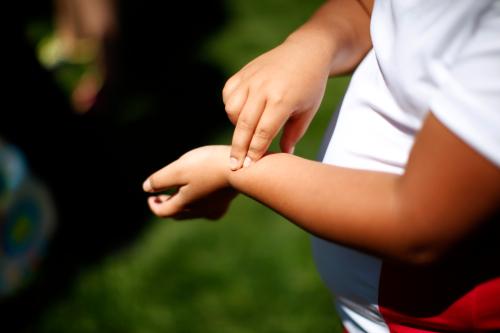This page summarizes the findings of a paper published in the September 2019 edition of Obesity, authored by researchers from the Brookings Institution, Tufts University, the University of Auckland, and Deakin University. This paper was produced by the COMPACT (Childhood Obesity Modeling for Prevention and Community Transformation) collaboration.
Why childhood obesity matters
According to the latest data, childhood obesity affects nearly 1 in 5 children in the United States, a number which has more than tripled since the early 1970s. Children who have obesity are at a higher risk of many immediate health risks such as high blood pressure and high cholesterol, type 2 diabetes, and asthma. They are also much more likely to be obese as adults. Despite extensive public health efforts to combat childhood obesity, there is no sign of a decline in its incidence, and the issue remains a significant concern both in the U.S. and abroad.
Romp & Chomp: An intervention that works
There is evidence, however, that a whole-of-community obesity prevention intervention approach can effectively reduce childhood obesity. These interventions are community-based initiatives that bring together community stakeholders and leverage existing resources and networks to implement obesity prevention efforts.
One example of a successful intervention of this kind was the Romp & Chomp project that took place in Geelong, Australia between 2004 and 2008. The intervention took a broad, inclusive approach to creating healthier environments for young children in the region by promoting healthy eating and active play in education and childcare settings.
A core component of this intervention was a central steering committee composed of representatives from different community stakeholder groups. This committee met periodically to plan intervention activities across the community, including professional development for early childhood care and education staff members, social marketing, and policy development and implementation in early childhood settings.
The Romp & Chomp project resulted in a significant decline in the number of children with overweight and obesity in the intervention community, in addition to significant improvements in behavioral indicators such as reduced consumption of packaged snacks and sugar-sweetened beverages.
Learning from the Romp & Chomp intervention
In order to understand why the Romp & Chomp intervention was successful and make actionable recommendations for other communities, we need to understand the process that drove success in the Romp & Chomp community.
We hypothesized that a process that we call stakeholder-driven community diffusion (SDCD) was central to the success of the Romp & Chomp program. This process involves the steering committee of community stakeholders spreading knowledge about and engagement with obesity prevention efforts in the community through their existing social network connections. These increases in knowledge and engagement are expected to drive changes in policy and practice in settings such as childcare, health care, and local government. These midstream changes are, in turn, expected to have downstream impacts on behaviors, and subsequently on rates of childhood obesity and overweight.
In order to test our hypothesis, we employed a computational simulation that captures social interactions between members of a community over time and produces estimates of community-level change emerging from those interactions. The results of these simulations provide evidence supporting our hypothesis that knowledge about and engagement with childhood obesity prevention was increased as a result of steering committee activity.

Why these results matter
We combined two robust bodies of literature: whole-of-community interventions and computational modeling of social phenomena through networks. The tool that we develop here not only provides important insight about why one specific intervention worked, but also can guide future childhood obesity prevention interventions.
Becca Portman provided editorial and graphics assistance for this report summary.













